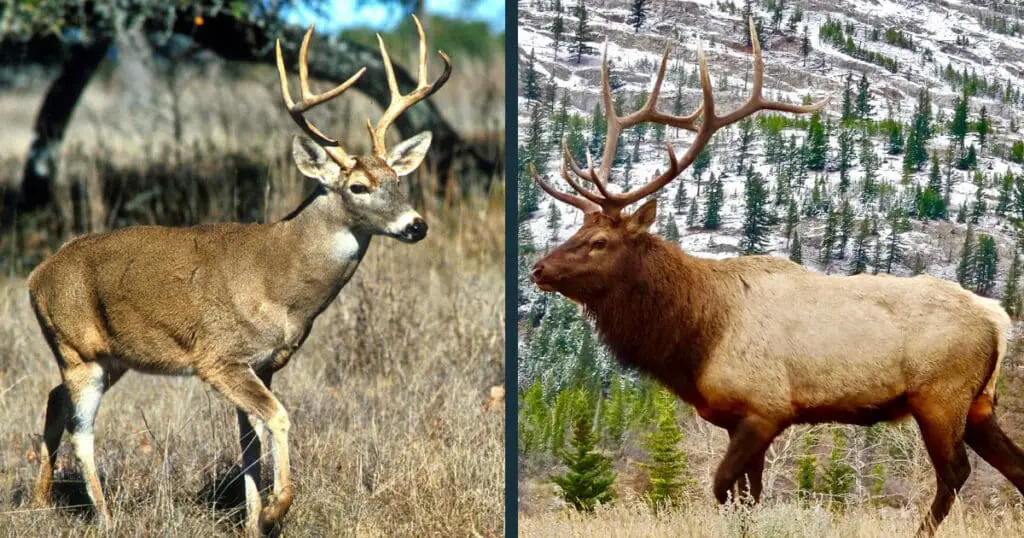There over 90 species that comprise the deer (Cervidae) family, a group of grazing ruminants that includes animals like moose, reindeer, elk, and white-tailed deer. So, when we use the word deer, we can mean the whole family or some specific species within that family. For example, there are some clear differences between an animal like an elk and other deer. In this Deer vs Elk comparison, we’ll explore these differences and compare Elk to other species of deer.
In Brief: What is the Difference Between Elk and Deer?
Table of Contents
ToggleWhile all elk are deer, not all deer are elk. Every species of deer is unique, and the Elk is one beautiful and impressive species within the Cervidae (deer) family.
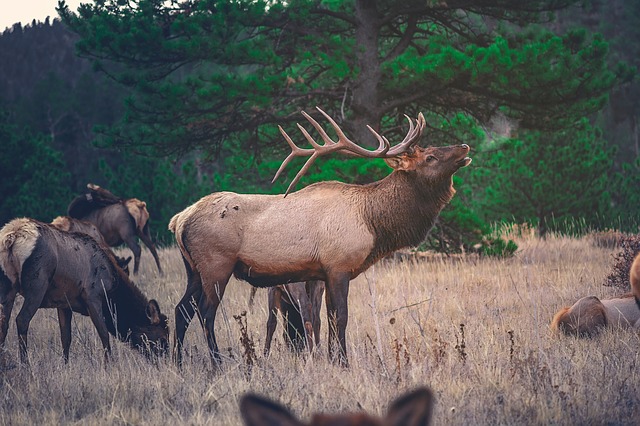
How Our Local Deer Population Can Lead to Confusion in Terminology
For most people in North America, the word “deer” is used to describe some specific animals within the wider Cervidae family. Often – we use the term “deer” to describe whatever species we’re most familiar with.
For example, the white-tail deer, and the mule deer, which are similar in a few ways, are often just referred to as deer (i.e. “I saw a deer” or “look, a deer”).
It is important to understand that these animals, as well as elk, reindeer, and moose, are all unique species of deer. From there, we can learn about and discuss some important differences between elk and what we think of as the classic deer species, like white-tail, roe, and mule deer.
Elk vs Deer Quick Comparison
Let’s start with a quick, side-by-side comparison between Elk and Deer to highlight the unique characteristics that distinguish Elk from other types of deer.
| Elk | Deer | |
| Habitat | Forested mountainous regions in small pockets around North America. | Widespread worldwide and found in forests, savannahs, grasslands, deserts, and even urban areas. |
| Size | 5 feet in height, over 9 feet in length, and weighs up to 800 pounds. | Height of 3.5 feet, length of 7 feet, and a maximum weight of 300 pounds. |
| Color | Blacker legs with thick, brown coat. Shaggy hair and a mane to protect them during cold winters. | More off-brown that turns greyish brown during the winter months. Species like whitetails have parts that are white. |
| Antlers | Tall, large, and imposing branched antlers on males only that curve towards the body. | Spiky antlers or shorter, branched antlers curving to the face. |
| Speed | 45 miles per hour | 30 miles per hour |
| Diet | Plant-based specialist that grazes on grass. | Foraging animals with a diverse plant-based diet, including plants, leaves, grasses, lichens, tree bark, and fruit. |
| Sound | Loud mating calls and other roaring vocalizations. | Largely silent but can make chirping sounds, bleats, and squeals. |
| Tracks | Hooves leave prints in two circular parallel halves. | Hooves leave a delicate heart-shaped print. |
Main Differences Between Deer and Elk
Now let’s take a closer look at some of the differences between Elk and Deer outlined above.
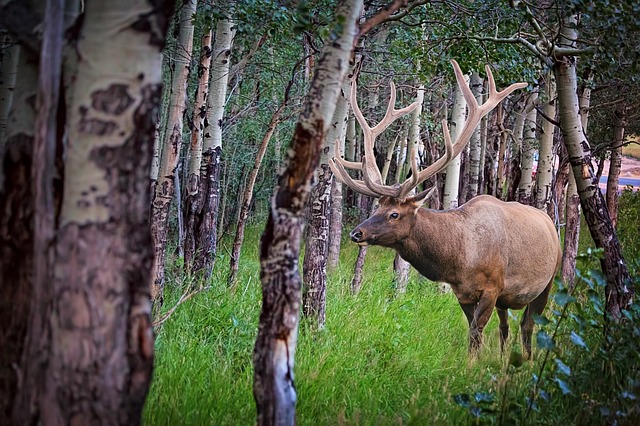
Range & Habitat
Classic deer species will live in grasslands, savannahs, and forests. Elk are more suited to forests higher up in mountain ranges.
Appearance
Body Size
Perhaps the most observable difference between elk and normal deer species is size. Species like white-tail, roe, and mule deer are smaller, with a height of 3.5 feet, length of 7 feet, and a maximum weight of 300 pounds. Elk can reach over 5 feet in height, over 9 feet in length, and weigh up to 800 pounds.
Size of Antlers
Classic deer species have spiky antlers or shorter branches antlers. Elk boasts the usual antlers associated with deer species, big, branched antlers that stretch far above the head.
Color of the Coat
Deer have reddish-brown coats that may turn grey during winter, while some species, like the whitetail, will have white speckles and a white tail (think Bambi and you’ve got it). Elk look more imposing with a shaggy coat designed to withstand cold winters. They also grow manes during the winter to preserve body heat.
Other Distinguishing Characteristics
Speed
Deer have a top speed of 30 miles per hour, which they use to escape from predators. Elk can go even faster in the opening, achieving speeds of 45 miles per hour.
Diet
Both deer and elk eat plant-based diets, but elk is more of a specialist that grazes on grass. Deer will be more diverse and eat fruits, shoots, grasses, lichens, bark, and vegetables.
Sound
Silence is one of the best defenses deer use to evade predators. Humans often walk past deer without even knowing they are there. Animals like whitetails, roe, and mule deer can make sounds, such as bleats, grunts, and high-pitched squeals. Elk use sounds during mating season, sending a very loud bugling call during the autumn months. This can be heard from miles away and is more prominent during the morning and evening, and it’s a key difference when comparing deer vs Elk.
Tracks
Deer are lighter and soft-footed, leaving heart-shaped tracks. Elk are heavier and have a different hoof shape, leaving two round halves on each hoof.
Comparing Elk to Common Deer Species
Now let’s compare Elk to some common types of deer you may be familiar with.
White Tailed Deer Compared to Elk
While elk can stand over 5 feet and weigh over 800 pounds, whitetails are much smaller, never exceeding 3.5-feet in height and 250 pounds in weight.
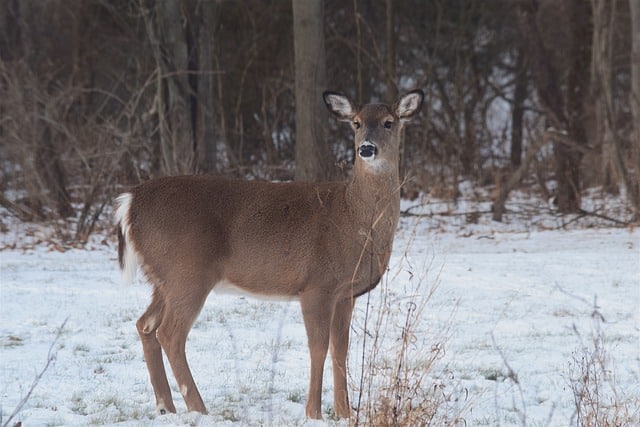
As the name suggests, whitetails have a visible white patch on their tails, which are raised in a white flash when the deer are spooked and they bound away to safety.
Only males have antlers in both species (Reindeer are the only deer species where female deer grow antlers), but whitetail bucks have relatively small antlers that curve toward the face. Bull elks, on the other hand, sport massive antlers that curve back towards the body.
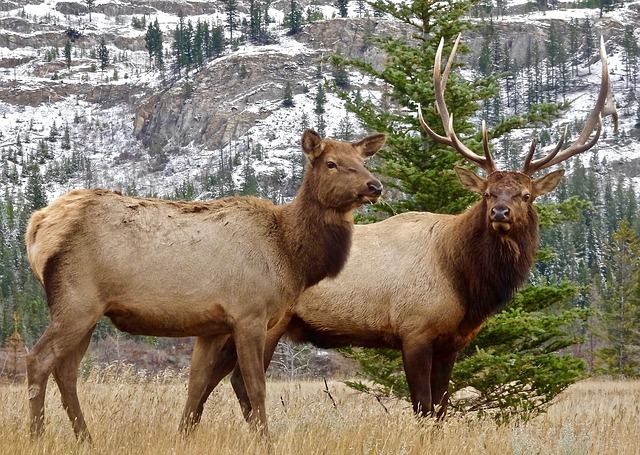
Elk give birth to a single calf that weighs around 45 pounds, whereas whitetails usually birth two fawns, weighing around 8 pounds each. At six months old, an elk calf is the same size as an adult white-tail doe.
In the United States, whitetail deer are far more widespread than elk. Elk are only found in some pockets of the country. Whitetail deer are located across the country and are the most common deer species. In fact, there are millions of whitetails nationwide.
Finally, elk live longer than whitetail deer, achieving a top age of 15 years compared to 10 years for deer.
Roe Deer Compared to Elk
Roe Deer are found throughout Europe and are a small Cervidae species.
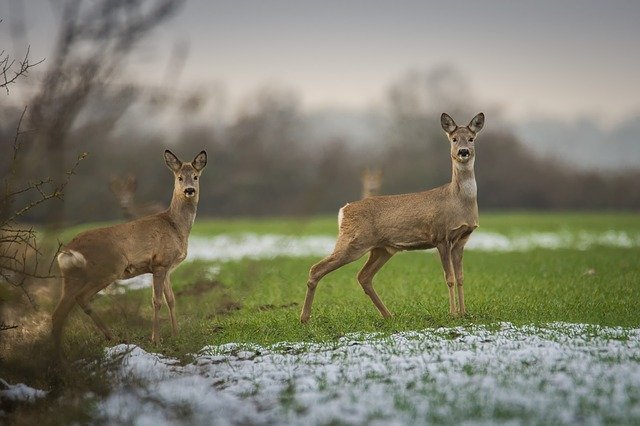
Compared to an elk, this species stands at a maximum of 2.5 feet, up to 4.5 feet in length, and has a maximum weight of 100 pounds.
Due to the drastic size difference between Elk and Roe Deer, there should be no reason to mistake these two animals.
Mule Deer Compared to Elk
Mule Deer are easily recognizable because of their enormous mule-like ears. This characteristic makes them one of the most visually distinct of all deer species.
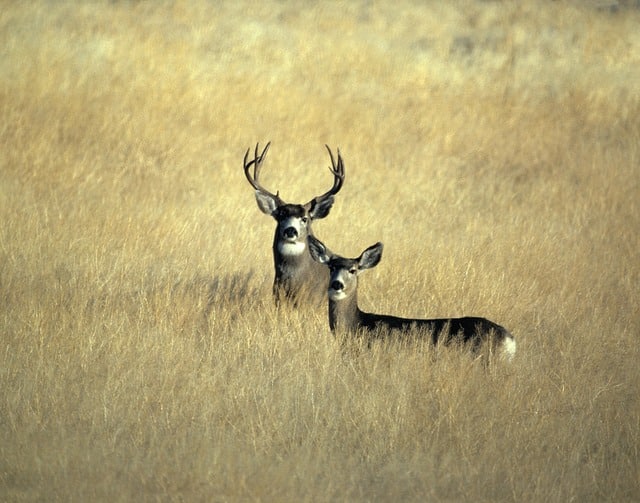
They are common in desert regions and are about the same size as the white-tail deer. That is, mule deer are usually 3.0-3.5 feet tall at the shoulder, 4.5-7.0 feet long, and weigh up to 280 pounds.
Mule deer do share some of their habitats with whitetail deer; however, mule deer and elk will never cross paths. Elk ranges tend to be farther north in the Western US and Canada, whereas Mule Deer are found farther south in the Western United States and into Mexico.
In any Mule Deer vs Elk comparison, it’s easy to differentiate the two species.

